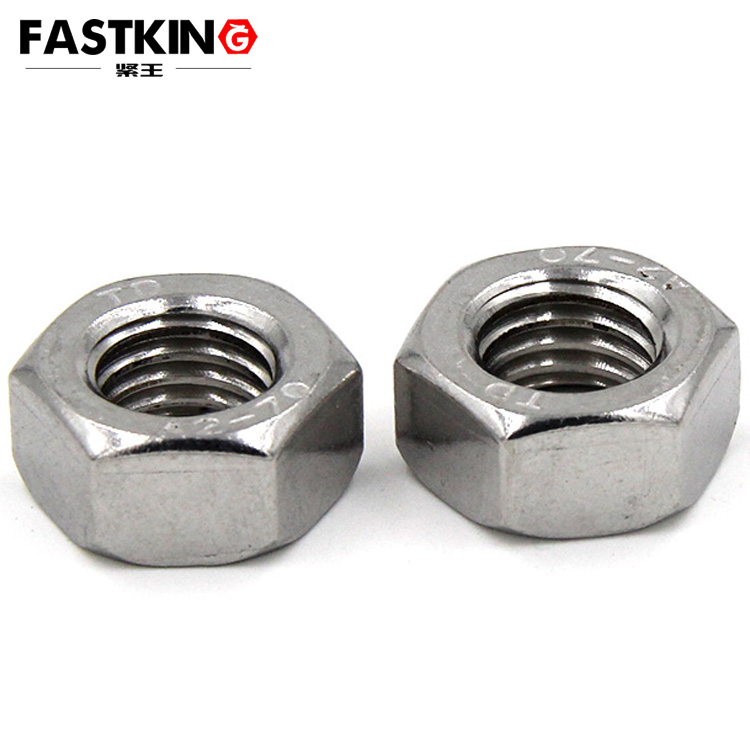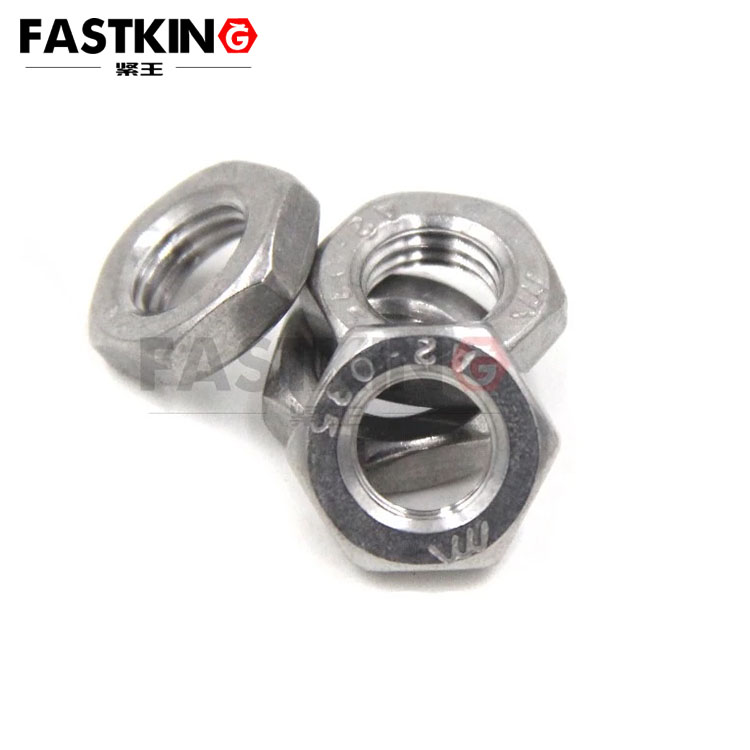Hex Nut
- Product description:A nut (commonly known as a "screw cap") is a component used in conjunction with bolts or studs to connect and fasten mechanical parts. It is mostly applied in occasions that require frequent assembly
-
Alloy steels: 40Cr, 35K
-
Carbon steels: 45# steel, Q235 (A3 steel)
-
Stainless steel
-
Other materials (e.g., plastic-steel for specific scenarios)
4, 5, 6, 8, 10, and 12 grades
A nut is a fastener with internal threads, designed to mate with bolts for connecting mechanical components. It can also be used with studs to transmit motion or power in mechanical systems. As an essential component in all mechanical manufacturing processes, nuts fasten parts by screwing onto bolts or studs.
Nuts are categorized by multiple criteria, including standards (regional specifications), materials, and thread sizes:
Common standards include Chinese (GB), British (BS), American (ANSI/ASME), and Japanese (JIS) standards.
-
Carbon steel nuts
-
High-strength alloy nuts
-
Stainless steel nuts
-
Plastic-steel nuts
-
Ordinary nuts
-
Non-standard nuts
-
Old GB standard nuts
-
New GB standard nuts
-
American standard nuts
-
British standard nuts
-
German standard (DIN) nuts
Thread specifications vary by standard, and only nuts and screws/bolts of matching specifications can be used together:
-
Metric system (GB, DIN, JIS): Marked with "M" + number (e.g., M8, M16). For example, an M3-0.5 nut has an inner diameter of approximately 3mm, with a thread pitch (distance between two adjacent thread crests) of 0.5mm.
-
American standard: Marked with "#" + number or fractions (e.g., 8#, 10#, 1/4", 3/8"). American standard nuts can only mate with American standard external threads.
-
British standard: Marked with fractions (e.g., 1/8", 1/4", 3/8").
-
Thread Compatibility: Nuts and bolts must match in thread standard (metric/American/British), nominal diameter, and pitch to ensure secure connection. Mismatched threads may cause assembly failure or looseness.
-
Standard Application: Chinese national standards (GB) are widely used in domestic machinery manufacturing; American (ASME) and German (DIN) standards are common in imported equipment or international projects.
-
Material Selection: Choose materials based on environmental conditions (e.g., stainless steel for corrosion-prone environments, high-strength alloys for heavy-load scenarios) and hardness grades based on load requirements.


